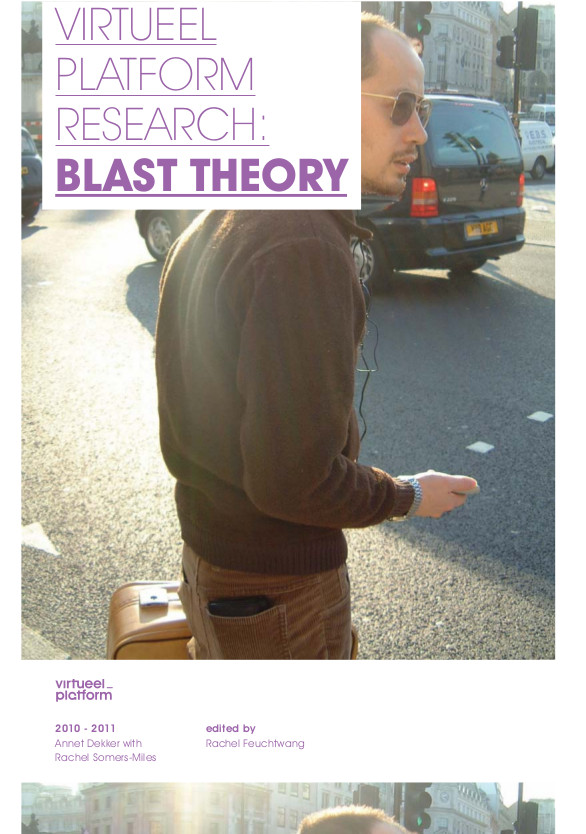Hannah Higgins: Fluxus Experience (2002)
Filed under book | Tags: · art, art criticism, art history, education, experimental film, fluxus, happening, intermedia, intermedia art, neo-dada, performance, performance art, pop art

“In this work, Hannah Higgins explores the influential art movement Fluxus. Daring, disparate, contentious—Fluxus artists worked with minimal and prosaic materials now familiar in post-World War II art. Higgins describes the experience of Fluxus for viewers, even experiences resembling sensory assaults, as affirming transactions between self and world.
Fluxus began in the 1950s with artists from around the world who favored no single style or medium but displayed an inclination to experiment. Two formats are unique to Fluxus: a type of performance art called the Event, and the Fluxkit multiple, a collection of everyday objects or inexpensive printed cards collected in a box that viewers explore privately. Higgins examines these two setups to bring to life the Fluxus experience, how it works, and how and why it’s important. She does so by moving out from the art itself in what she describes as a series of concentric circles: to the artists who create Fluxus, to the creative movements related to Fluxus (and critics’ and curators’ perceptions and reception of them), to the lessons of Fluxus art for pedagogy in general.
Although it was commonly associated with political and cultural activism in the 1960s, Fluxus struggled against being pigeonholed in these too-prescriptive and narrow terms. Higgins, the daughter of the Fluxus artists Alison Knowles and Dick Higgins, makes the most of her personal connection to the movement by sharing her firsthand experience, bringing an astounding immediacy to her writing and a palpable commitment to shedding light on what Fluxus is and why it matters.”
Publisher University of California Press, 2002
ISBN 0520228677, 9780520228672
259 pages
Reviews: Ken Friedman (Design Research, 2003), Jennie Klein (PAJ: A Journal of Performance and Art, 2004), Roy R. Behrens (Leonardo, 2004), Branislav Jakovljevic (TDR: The Drama Review, 2004), Ágnes Ivacs (Artpool, n.d.).
PDF (updated on 2012-7-18)
Comment (0)Shadowboxing, 1-5 (2011)
Filed under magazine | Tags: · art, contemporary art, curating, intellectual property, performance art, public space
Shadowboxing brings together projects by four artists, Mariana Castillo Deball, Sean Dockray, Marysia Lewandowska and Wendelien van Oldenborgh, in an exhibition developed in collaboration with the graduating students of the Royal College of Art’s Curating Contemporary Art MA. Using different strategies – from tinkering to direct confrontation – each of these artists considers how the media and institutions that control our behaviour and ideology can be disrupted. The ideas behind the project are further explored in a five-part publication and a series of events.
The publication makes visible the processes of discussion, collaboration and production between artists and curators at different moments between February and June 2011. Contributions take the form of artists’ commissions, interviews and conversations with relevant people from the cultural and political field, as well as essays by the curators.

Issue 1, February 2011
The dialogue prompted by Giorgio Agamben’s text ‘What is an Apparatus?’ has been central to the development of SHADOWBOXING. Issue 1 reproduces this text including questions posed to the four artists as part of the invitation to collaborate with the CCA students and Marysia Lewandowska’s annotations, which reflect her reading of the text in response to the invitation.

Issue 2, March 2011
SHADOWBOXING has developed as conversations have unfolded between the artists and curators. What has transpired from this approach over the past months is an exploration of the different ways in which artists enact critique within certain parameters, and an awareness of the paradox: how can one challenge forces that have become so internalised that they are indistinguishable from one’s own shadow? Issue 2 reflects through images and texts the research and the production process of SHADOWBOXING. It also includes the exhibition guide and the programme of events and film screenings.

Issue 3, May 2011
The act of publication, as defined by the writer Matthew Stadler, constitutes a deliberate political strategy, which enables the formation of a public space through an ongoing circulation of ideas, texts and conversations. Much in line with his thinking, Publication is conceived as a snapshot of the unfolding dialogues that have shaped and continue to inform SHADOWBOXING. The contributions in this issue reflect upon the boundaries between private and public spaces, and how these can be tested or made contingent.

Issue 4/5, July 2011
A Structure that Wants and To be Another Structure has been conceived as a double issue, where the content of the publications run in parallel. As a whole it both reflects, and confronts the terms used throughout SHADOWBOXING. It includes a text by Wendelien van Oldenborgh and interviews with Lis Rhodes and Rainer Ganahl.
Issue Four/Five is edited by the graduating students on the MA Curating Contemporary Art at the Royal College of Art, 2011 and is designed by James Langdon.
Edited by the graduating students on the MA Curating Contemporary Art at the Royal College of Art
Published by the Royal College of Art, London, 2011
Licensed under Creative Commons Attribution
Virtueel Platform Research: Blast Theory (2011)
Filed under brochure | Tags: · art, performance art, technology

“Blast Theory is artist group using interactive media, creating performance and interactive art that mixes audiences across the internet, live performance and digital broadcasting. Led by Matt Adams, Ju Row Farr and Nick Tandavanitj, the group’s work explores interactivity and the social and political aspects of technology. It confronts a media saturated world in which popular culture rules, using performance, installation, video, mobile and online technologies to ask questions about the ideologies present in the information that envelops us.
This publication focuses on the work and the creative process of Blast Theory, specifically the project Uncle Roy All Around You.”
Edited by Rachel Feuchtwang
Publisher Virtueel Platform, May 2011
Virtueel Platform Research series
Creative Commons Attribution-Noncommercial 3.0 Netherland License
36 pages
Publisher
via Renée Turner
PDF (updated on 2017-7-11)
Comment (0)
